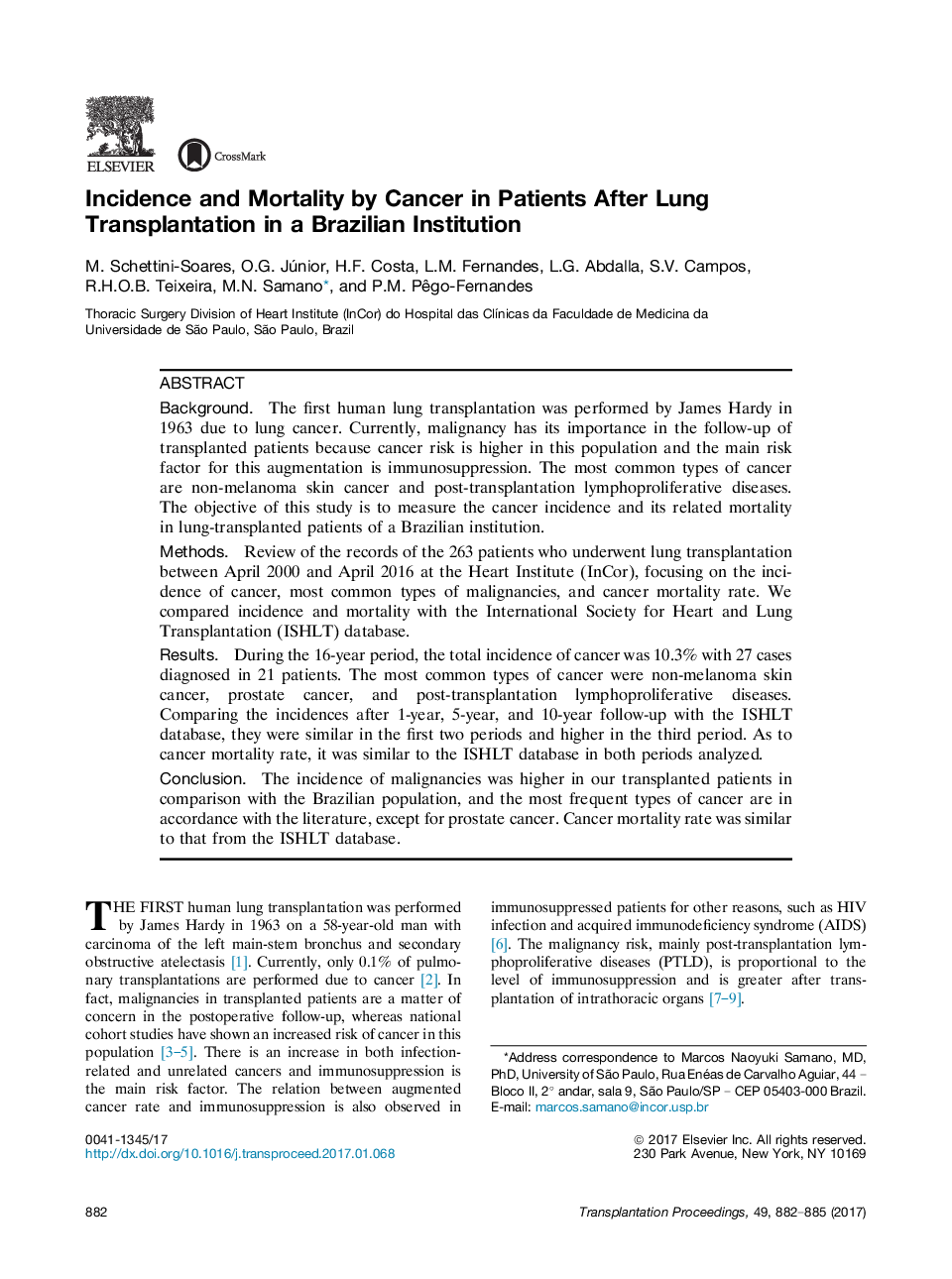| Article ID | Journal | Published Year | Pages | File Type |
|---|---|---|---|---|
| 5728956 | Transplantation Proceedings | 2017 | 4 Pages |
BackgroundThe first human lung transplantation was performed by James Hardy in 1963 due to lung cancer. Currently, malignancy has its importance in the follow-up of transplanted patients because cancer risk is higher in this population and the main risk factor for this augmentation is immunosuppression. The most common types of cancer are non-melanoma skin cancer and post-transplantation lymphoproliferative diseases. The objective of this study is to measure the cancer incidence and its related mortality in lung-transplanted patients of a Brazilian institution.MethodsReview of the records of the 263 patients who underwent lung transplantation between April 2000 and April 2016 at the Heart Institute (InCor), focusing on the incidence of cancer, most common types of malignancies, and cancer mortality rate. We compared incidence and mortality with the International Society for Heart and Lung Transplantation (ISHLT) database.ResultsDuring the 16-year period, the total incidence of cancer was 10.3% with 27 cases diagnosed in 21 patients. The most common types of cancer were non-melanoma skin cancer, prostate cancer, and post-transplantation lymphoproliferative diseases. Comparing the incidences after 1-year, 5-year, and 10-year follow-up with the ISHLT database, they were similar in the first two periods and higher in the third period. As to cancer mortality rate, it was similar to the ISHLT database in both periods analyzed.ConclusionThe incidence of malignancies was higher in our transplanted patients in comparison with the Brazilian population, and the most frequent types of cancer are in accordance with the literature, except for prostate cancer. Cancer mortality rate was similar to that from the ISHLT database.
